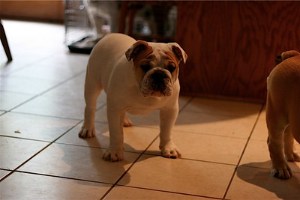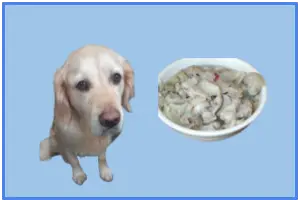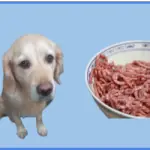
Bulldogs are known to be chubby, and they’re adorable. But, how big should they be? When do they reach that critical point where it’s unhealthy, and your Fido is actually overweight?
What are the risks involved here? What happens when they’re too skinny? Are there types of bulldogs that are inherently skinny? Hang on, because we’re diving down this rabbit hole.
What is a healthy weight for a bulldog?
Maintaining a healthy weight and good general fitness is essential for your dog’s overall health and wellbeing. In this regard, our fur kids are just like humans. While your dog’s ideal weight varies according to age, breed, size, and size, there are some general guidelines that will help you figure out whether he should lose or gain a few pounds.
Other than a weigh-in at the vet, you can simply look at your pup. Yup, it’s that simple. When you’re viewing him from above, you should clearly see his waist, and his sides should be flat. If he’s slightly oval-shaped, he’s probably on the pudgy side and in need of some exercise or fewer treats. Dogs battle the bulge too.
Speaking of the bulge, if your pup is overweight, you’ll notice his tummy sagging when you view him from the side. Dogs at a healthy weight generally have a tummy that’s slightly tucked up.
On the other hand, if you can clearly see your pup’s ribs, he probably needs some fattening up. Perhaps his current diet isn’t working that well, or he has some other malady at play, causing him to lose weight.
Generally, if a dog is fit and healthy, you can feel his ribs under his skin without pressing too hard, but they’re not so prominent that you can play the xylophone on them.
While bulldogs generally appear pudgy because of their size and stocky shape, these guidelines are valid for them as well. If you’re unsure whether your pup is in shape, take him to the vet for a checkup.
What are the risks to a bulldog of being overweight?
Due to their shape and size, bulldogs have a ton of health issues inherent to their breed. If your Rover is overweight, these get compounded and can cause some severe problems, especially breathing.
Bulldogs tend to have squashed nasal cavities that make it really hard to breathe. Some of them are prone to breathing attacks because of this. When they’re overweight, the added weight they’re carrying around puts more pressure on their bodies.
Now, they must work even harder to get a decent amount of air into their lungs. So, even before they get any form of exercise, they’re over-exerting themselves just to stay alive. That’s not cool.
Overweight pups have other health issues, like joint pain, arthritis, diabetes, skin problems, and heart problems, kidney disease, liver problems, limited mobility, and high blood pressure, to name a few. So, it’s always best to keep your pup at a healthy weight and in good shape.
Five ways to help a skinny Bulldog
We all know about overweight dogs, but what happens if your pooch is on the skinny side? You’re not a negligent owner, and you love your pup dearly, but the poor thing just can’t seem to gain weight. So, now what?
[1] Medical Issues
First, you need to check that your pup is generally healthy. Some common medical issues can cause weight loss in dogs include worms or other parasites, hepatitis, diabetes, and bowel infection. Most of these depress your pup’s appetite as well, so he won’t be eating as much as he should be in the first place. This lack of appetite further compounds the effect of whatever is going on medically.
So, in short, if you think your pup is underweight, take him to the vet for a checkup. Once you know that he’s not suffering from any medical issue, implement the next phase of the plan.
[2] Track Everything
Seriously. Track everything: your pup’s meals and mealtimes, how much he ate, the treats he had between meals, how much exercise he had and when, his behavior in general, and any other thing that seems noteworthy during the day.
Armed with this data, you could pinpoint triggers in your pup’s routine or environment that causes the weight loss or lack of weight gain. Also, track your pup’s weight by weighing him once a week. Perhaps a pattern emerges that could help you solve the issue.
[3] Change His Diet
Okay, Captain Obvious. Of course, your pup’s eating the wrong stuff, or not enough of the right things if he’s otherwise healthy but not gaining weight. Maybe your pooch isn’t too fond of whatever you’re feeding him. This happens all the time – pets can be as fussy as their human parents, with specific preferences and opinions. Maybe that’s what that look means. You know, the stink eye he gives you when you serve his food, right before he stalks off to sulk on the couch.
Changing up your fur kid’s food could be the answer. It might be wise to gradually do this, figuring out what he likes and what’s keeping him healthy. If this seems super confusing to you, talk to your vet for guidance.
Sometimes, our fur kids need human food supplements added to their diet, like boiled eggs, roasted chicken, or plain broth. Check with your vet to be sure what’s appropriate for your pup.
Maybe your pooch doesn’t like dry dog food? If your pup has sensitive teeth, especially if he’s older, the dry dog food could be challenging for him to chew. Add a bit of water to the dry food. It will soften things up a bit, enabling him to chew it with ease.
Then there’s snack time. Using a mixture of ground meat, cheese, and eggs could add a healthy fat bomb to your pup’s diet, giving him an energy boost when he needs it. These are super easy to make, and you could freeze them in convenient bite-sized chunks too.
[4] Small, Regular Meals
Most people feed their dogs two large meals per day. This system is convenient, especially when you’re working away from home. Unfortunately, this isn’t great for digestion. So, rather than feeding your pup two heavy meals per day, serve more, smaller meals spread throughout the day.
When you do this, don’t shock the poor pooch with a sudden shift to this new normal, though. Break up his meals gradually, first offering slightly smaller main meals, interspersed with healthy snacks. Then, slowly decrease the meals’ size while increasing the snacks’ size until you reach the required regular meal sizes.
When you do this, you give both his tummy and mind time to adjust to this new routine.
[5] Exercise
Guys, you can’t be healthy if you spend all day on the couch. This rings true for both dogs and humans. So, in conjunction with eating healthy, let your pup have regular, age and breed appropriate exercise.
Now your pup will have the muscle necessary to carry that extra weight instead of just gaining fat, which is super unhealthy. If your dog is currently a total couch potato, go easy on him. Start with short, mild walks, not insane exercise.
Muscle fatigue is a thing and can cause serious injuries. Instead, increase the tempo of his workout gradually, keeping a close eye on what he can handle.
Are some types of Bulldogs more skinny than others?
There are four main types of Bulldog, namely the English, French, and American (Scott and Johnson), and Old English types. All bulldogs are short, rather stubby, and super cute. The American Scott type tends to be skinnier than the rest, though. That’s because its build is more athletic and less muscular than its sister breeds.
So, while bulldogs are generally not the type of skinny you’d expect from a Great Dane, for instance, the Scott type appears slightly daintier than the rest.
Closing Thoughts
While bulldogs are generally stubby and muscular, they should still maintain healthy body weight. Being overweight causes a host of medical complications for your pup, so if your pup is on the pudgy side, it’s time to take action to bring its weight down. The same goes for pups that are too skinny – some fattening up and proper exercise should get them in a healthy condition in no time. Check with your vet as well to rule out medical conditions that could exacerbate the situation.
The American Scott type bulldog is generally skinnier than other bulldog breeds. Still, it maintains the characteristic bulldog look with stubby legs and cute, perky ears.






